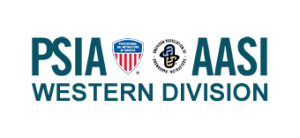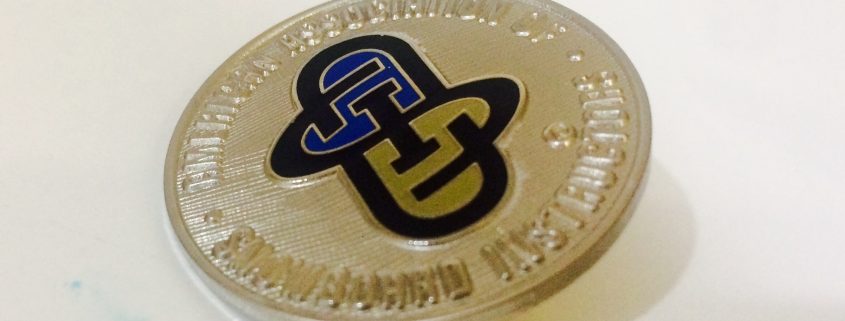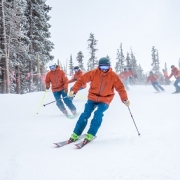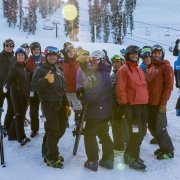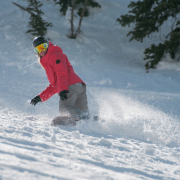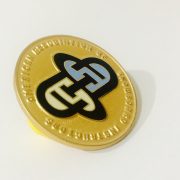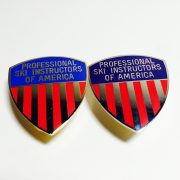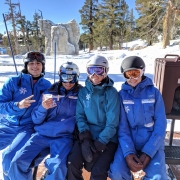The Snowboard Level 2 Teach Module
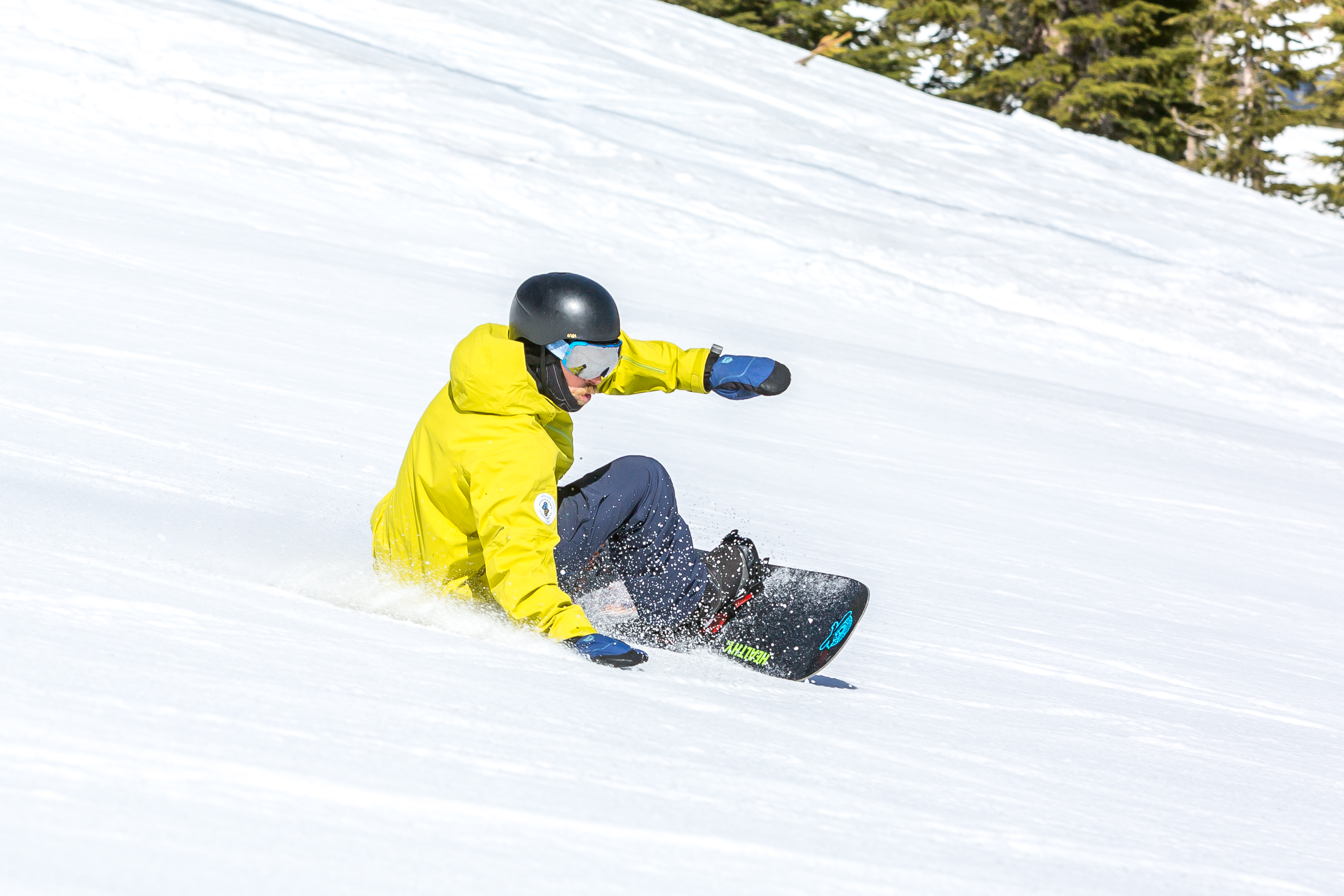
AASI Western Division The Level II Teach Module
Written by Asa, built by many.
Of the many reasons to read this document, three of them are most likely that;
● You are beginning your Level II certification journey and want to know what to expect before you dive in.
● You have successfully passed your level II Ride Module and are preparing for the next step.
● You are a trainer looking to prepare your instructors with a clear expectation of what’s required to be successful.
Whichever it is, you’re in the right place. It’s easy to get lost in a world full of acronyms, models, and terminology that is ever-progressing, so the goal of this piece of writing is to provide our membership with a very clear, very transparent description of what their two days in the Teach Module will look like, how it will be structured, and what will be expected of them to achieve this level of certification. Within, you will discover how we as examiners manage this event, what a successful teaching segment could look like, and what we’ll expect in the realms of movement analysis and professional knowledge. What you will NOT find are detailed descriptions and in-depth information on these terms and models. For that, you’ll have to reference the reading material and consult your trainers and mentors. Your success is our success. As members of the Educational Staff, our job is not to keep our knowledge of snowboarding hidden away. This is not a mysterious club, there is no secret handshake to learn or decoder ring you need to decipher. There is only OUR commitment to YOUR growth. All we need from you is to do the same.
-Asa Fountain Western Division Educational Staff
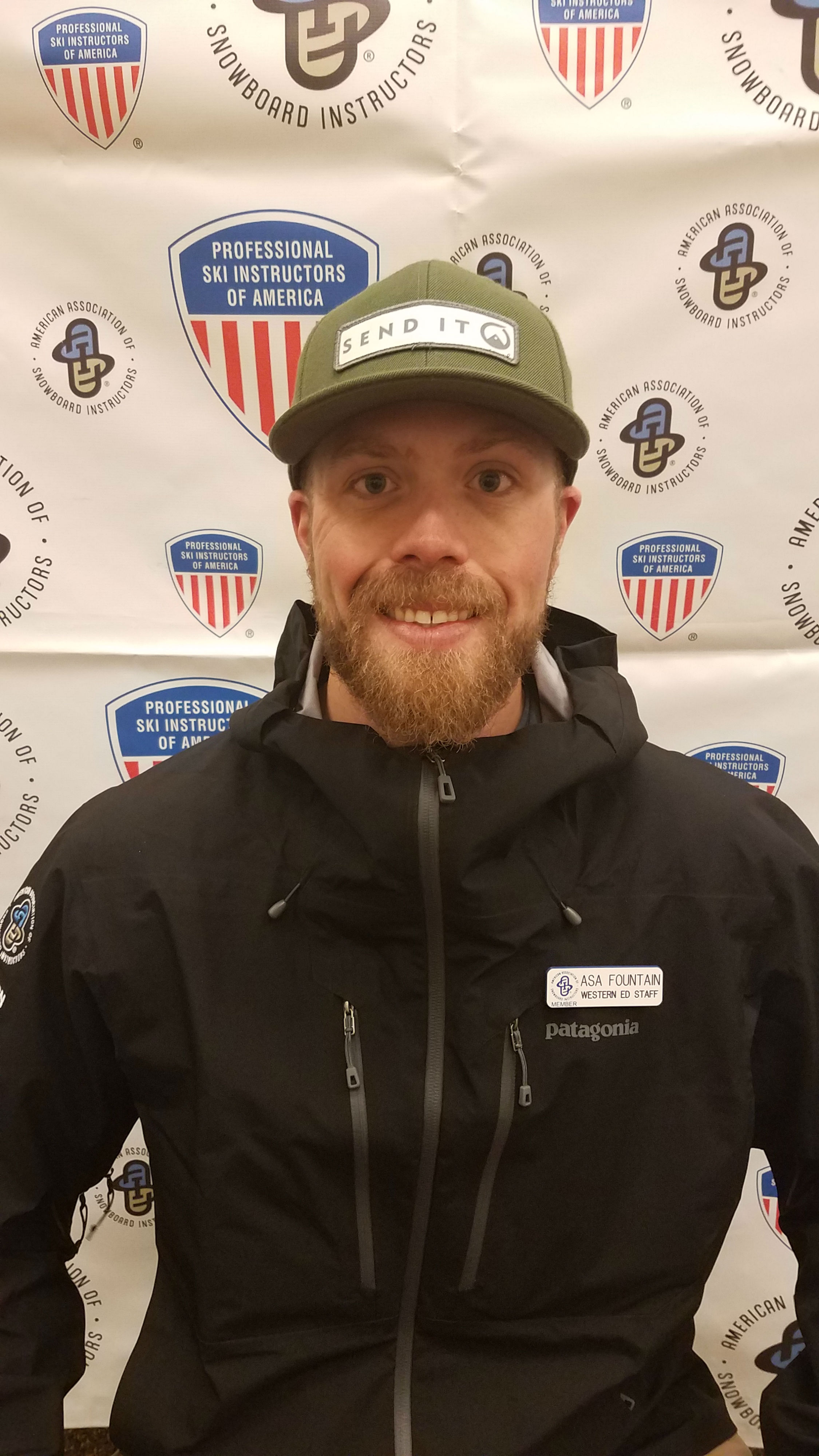
Your Examiner
Like our membership, the Western Division Educational Staff comes in all shapes, sizes, and personalities. What they all have in common is their commitment and passion to the development of snowboard education. At one point in their life or another, they’ve been through the same process you currently find yourself in and have shared many of the same successes and failures.
Read this next sentence carefully. Our job is NOT to actively search for reasons to keep you from achieving the standard. It’s actually quite the opposite. Our job is to ensure, before anything else, that you leave the event a better instructor, coach, and educator than when you arrived, and we’ll do that by offering constructive feedback, taking advantage of coaching opportunities for your growth as an educator, and providing you with as many opportunities for success as possible. We want you to be successful. That said, there is still a standard to achieve. Without it, reaching these levels of certification would mean very little, and we want you to be proud of these milestones.
Ask your examiner questions. Grab a chairlift ride if you need some clarity, and more importantly, get stoked with them! We’re here to snowboard, after all.
Day One Layout
No two events are exactly alike. Weather, snow conditions, group size, and available terrain can change how the examiner decides to delegate their time. Teaching segments may be shorter if the group is large, and vice verse. The ability to take breaks, and the length of the lunch break, may be added, cut, or adjusted depending on these variables. That said, there’s a general format we try to follow. It looks something like this:
Event Check-In and Introductions – Your day begins with checking in. The earlier you arrive, the easier it is for us to get the day started. We need this time to officially check you in for the day, provide you with a lift pass, and to learn who you are! The goal is to get on snow around nine o’clock, so the more efficient we can be during this time, the faster we can get strapped in.
Expectations and Agenda – Once on snow, it’s time to warm up. You’ll get a lap or two to get your legs working right, and we’ll also use this time to go over the agenda for the day and set our expectations for success. This is the time to ask any lingering questions before you’re put on stage. We’ll address safety, professionalism, and your role within the larger group, all intended to set you up for success.
Video Movement Analysis – Sometime on day one, depending on the venue and the number of groups participating in the event, it will be time to test your eyes. We’ll present a few videos of different kinds of riders that you’ll need to identify, analyze, and create an action plan for to improve their riding.
Mock Scenario – If we expect you to put yourself on stage, then so will we. Your examiner will showcase a mock teaching scenario, about twenty minutes long, to give you the chance to see and experience what a successful teaching segment could look like. It will be simple, follow a logical progression with a static-simple-complex approach, and address models such as CAP, TID, and PDAS. Your examiner will finish with a solid wrap-up, then go over the steps they took and why they took them.
Scenario Evaluations – It’s showtime. We’ll shoot to get through two or three teaching scenarios before lunch, all of them being about 30 – 40 minutes in length, but again, group size can change how long the teach segments will be. On the first day the teaching segments will be focused on a certain demographic of people, including age, gender, occupations, interests, and an environment of the mountain and snowboarding for them to learn. You’ll be asked to build a lesson addressing these details teaching an introductory-style lesson. More to come on the demographic teaching segments, including the post-teaching segment professional knowledge follow-up.
Lunch – Fuel up to get your body and mind right.
Scenario Evaluations – Part two of teach scenarios. Those who didn’t teach the group before lunch will do so in this block of time, still keeping them around 30 – 40 minutes in length.
One-on-One Feedback – It’s important to us that you have a very clear understanding of where you sit in accordance to the standard and know exactly what you need to show us to be successful. We’ll sit down with everyone one-on-one to go over your strengths from the day, address where we have room for growth, and exactly what adjustments need to be made on the second day. When you head home, you should have a very clear picture of what you need to do to achieve the standard. It’s up to you to make the necessary changes.
Day Two Layout
Event Check-In and Agenda Review – Some events you’ll be given a pass to cover both days of the event, others you’ll need a new ticket each day. At the end of day one the examiner should set up a meeting place and time for the start of day two, usually between 8:30 and 9:00. Regardless, be sure to be on time and where you were asked to meet. There’s a lot to do on the second day, and it’s a shorter day altogether, so be ready to get on the hill with the group.
Setting Up Success – There’s not much time to waste, but with any luck we’ll have the opportunity for a warm-up lap to get the blood pumping, inspect the conditions of the day, and have the chance to answer final questions before starting the second day of teaching scenarios.
Scenario Evaluations – Back at it! On day two, the teaching segments will be based on live movement analysis from the group. The goal here is to teach in a less contrived scenario, like on day one, and build a lesson based on what you’re actively seeing from your peers. Lunch – This lunch break is likely to be quick. Fuel up fast and get back out there.
Scenario Evaluations – Last round! The final teaching segments will be showcased here. One more chance to show us your stuff!
Free Time & Evaluation Forms – Take a deep breath, your exam is (mostly) over! There’s nothing left for you to present. Expect a good high five and a group review of the last two days. At this point the examiner will break away from the group and start writing up evaluation forms. You’ll have this time to free-ride (safely) or kick back and relax until it’s time to start one-on-one feedback, which should begin about 3:30 pm.
One-on-One Results – It all comes down to this. When finished writing feedback forms, your examiner will sit down with you to review your performance from the last two days. This is your opportunity to share what you enjoyed about the event and where you saw room for improvement. Your examiner will do the same for you, sharing their feedback on what areas you performed well in and what parts had room for growth. Ultimately it will result in achieving the standard or remaining below. Whatever the outcome, we were stoked to ride with you, and hope you leave the exam with new knowledge and skill to take back to your resort’s program. If we didn’t quite hit the mark, we want to leave you with a clear path to come back and knock it out of the park. If we reached the standard, we want to set you in the right direction toward your Level 3, or whatever new goals you may have in your snowboarding career.
Teaching Scenarios
Now that you have an understanding of the exam’s layout, let’s break it into a few chunks, starting with the big one: your teaching scenarios.
The process of learning is showcased by a model called “Bloom’s Taxonomy,” and in the middle of the pyramid that reflects the model lie the words “analyze” and “apply.” Correct analyzation of a scenario, or movement, followed by the logical application of tasks, drills, goals, and feedback in a progression-based segment is what we’re looking for at the level 2 standard. It’s a lot of fancy words, but it’s not that complicated.
Structure: This is the progression: the bones if you will. Your teaching segment should have a solid introduction describing how your progression is going to go and what you’re hoping to achieve, followed by the “meat and potatoes.”; three or four steps starting with a static movement, leading into something simple, and finishing with something more complex, or a blending of a couple movements to reach the final outcome. Wrap it up with a good conclusion including the steps you took, where they lead the group, what to expect in the future, and bam! There’s the structure of your segment.
Safety & Professionalism: You’re not only here to showcase your knowledge of snowboarding, but to present yourself as a professional of the industry. This takes form in many ways, but within your teaching scenario we’re looking for safety at all times, including proper terrain choice and appropriate tasks. As a professional, we expect you to be appropriate and engaged. That doesn’t mean we want you to be a robot, there’s plenty of room for you to be you, but understand that you’re not just representing yourself, you’re representing your mountain, your school, your trainers, and you’re working toward the privilege to represent the AASI as a level 2 certified instructor. Take that seriously.
Demographic and Movement Analysis Focused Lessons: On day one of your exam you’ll be asked to teach to a certain demographic. Here’s an example: your examiner asks you to teach a lesson to a group of basketball players. They’re all ages 9 or 10, and they’d like to learn how to catch air for the first time. So, right away you’re given an age, and the first thing you should be thinking about is the CAP model, which means using appropriate terminology, realistic movements, and group interaction for that age group. You’re then given an interest or hobby, in this case it’s basketball. We’d like to see you theme your lesson, or relate your lesson, to this interest. Maybe compare the extension of the legs to shooting a jump shot, or a defensive basketball stance to the flexed, athletic stance of snowboarding. Finally you’re given the lesson itself, in this example it’s a basic air, so it’s your job to build an introductory style lesson, using a static, simple, then complex approach to introduce catching air in this contrived scenario.
Your movement analysis based lesson on day two will be a little different. As mentioned above, this segment will focus on accurately analyzing the movements demonstrated by the examiner, group, or both. Identify a movement that is lacking and build your segment around it, with the goal of improving upon the deficient movement.
With either lesson, be sure to utilize more than one style of teaching, moving beyond the basic “command and task” approach. Utilize the group with reciprocal teaching, or play with movements through exploration and guided discovery. Show us your greater understanding of snowboard teaching concepts.
Feedback & Communication: We’re not looking for overly detailed, ultra technical speech in these lesson segments. We’re looking for realistic communication, like how you’d relay information to one of your clients at your home mountain. It needs to be clear and concise. Refrain from over-explaining or repeating yourself. Explain the task or drill once very clearly, then get the group moving.
Feedback can be addressed in many ways, but should be showcased throughout the lesson. However, don’t feel like you have to give a nugget to every single person at every single step in your progression. Start with a couple at a time, offering some constructive or positive feedback to a couple members in the group at each phase, this way you’re spreading it out and not killing the flow of the lesson. More importantly, make sure your feedback is specific. Saying “great job, guys!” over and over is more like cheerleading. Why was it a great job? What your examiner wants to see is that you’re actively looking at movements and addressing why they’re being efficient or why they need improvement.
Movement Based Teaching: TEACH. US. MOVEMENTS. Not just ideas, not just exploring. Teach us how to move our body to get the desired outcome. Teaching the group how to ride bumps? Show them how to use their ankles so they can steer with the lower body. Teaching how to do a 180? Show them how to rotate with their hips to generate spin. Snowboarding is an athletic endeavor, so it requires the body to move efficiently to do it well.
It’s worth noting that your examiner will NOT participate in your teaching segment. This was decided to provide the most even playing field possible. If the examiner is involved with one teaching segment and clearly engaged, then is quiet and distant in another, that can put the candidate at a severe mental advantage or disadvantage. We’re there to observe and observe only. If you can put all that together, you’ll be primed for success.
Professional Knowledge
Your knowledge as a professional of snowboard instruction will be on display much of the time during your level 2 Teach Module, including the online test you’ll have completed before the end of the exam, group tech-talks and on-hill conversations, and perhaps most importantly, during a chairlift ride or sit-down after you complete your teaching segments. You may be asked a few questions pertaining to teaching styles you used, particular models you have utilized, your understanding of board performances and movement concepts, etc. Your understanding and ability to apply this technical knowledge in a lesson format will be a big part of determining your success in the exam.
A few examples are:
● The CAP Model
● Piaget’s Stages of Development
● Maslow’s Hierarchy of Needs
● PDAS – The Children’s Teaching Cycle
● The ATML Model …and more.
Refer to the AASI National Standards for a more comprehensive list and study up, grab the insight of your trainers and peers, and own the material.
Movement Analysis
Your movement analysis success as a level 2 candidate will lie in your ability to accurately analyze movements in the video/written portion on day one, on-snow in your feedback skills toward the group, and during your MA focused teach segment on day two. Analyze, then apply corrective action in written form and in a well-built teaching segment. You’ll be expected to perform movement analysis in most terrain environments, up to groomed black and small freestyle terrain. To truly own your movement analysis skills be sure study concepts and models such as;
● Cause and Effect relationships
● Biomechanics of snowboarding
● Reference Alignments …and more!
Again, check out the AASI National Standards for a more detailed list.
After lunch on the first day you’ll be asked to perform Movement Analysis in written form from videos presented by the examination staff. You’ll see multiple riders in the level 3 – 4 range, and it will be your job to identify the level of rider, the terrain and conditions, where they’re being inefficient, and how you’d help them grow. These will be reviewed by your examiner after the first day and have an effect on what’s expected of you on day two.
On day two your teaching segment will be MA focused. The examiner, your peers, or both, will demonstrate riding in an environment where a deficiency is present. This could be fresh for the day or based on your written analysis from the videos on day one, depending on if the examiner needs to see more understanding of a certain movement from you or not. You’ll need to identify the inefficient movement and build a strong teaching segment to correct and improve it, utilizing all the pieces and parts that make a teaching scenario successful.
When practicing try focusing on the cause of the deficiency you’re seeing, not just the symptoms. If you’re seeing a flailing arm, is the flailing arm actually the problem? Or is it a symptom of a greater cause, such as an ineffective stance?
Remember, movement analysis is what we do every day we spend with our students. Practice on your peers, on the general public while riding the chairlift, and on video to hone your skills.
The Online Test
Access to an online test will be sent to you sometime before the exam after you’ve signed up for the event, which you’ll have to complete successfully before officially earning your level 2 certification. The test is comprised of multiple choice and true/false style questions. It will involve questions from current manuals and written resource material that you can access on psia-w.org and thesnowpros.org.
Now What?
Now you get to work. Take advantage of training programs provided by your snowboard school. If your ski & ride school is lacking in the training department, reach out to friends and colleagues at other resorts. Practice building introduction-style progressions beyond the beginner lesson and test them on students and peers to gauge their success. Constantly improve your movement analysis skills by watching the movements of riders all over the mountain. Develop your understanding of all the models and concepts of snowboard instruction, and more importantly learn how to apply them on the hill, not just on paper. It’s generally clear to your examiner when a candidate has put in the time to prepare and when they have not. Be the rider who IS prepared, and even more importantly, be the the candidate who lifts up the group as a whole because YOU were so well prepared.
Earning your level 2 certification is a huge step in your AASI career and is not to be taken lightly. It can open up many doors within your ski & ride school and at other mountains. Be proud to earn that silver pin, then take it as an opportunity to continue your growth as a snowboard professional. There is much more to learn and much more to experience.
Good luck! -Asa
